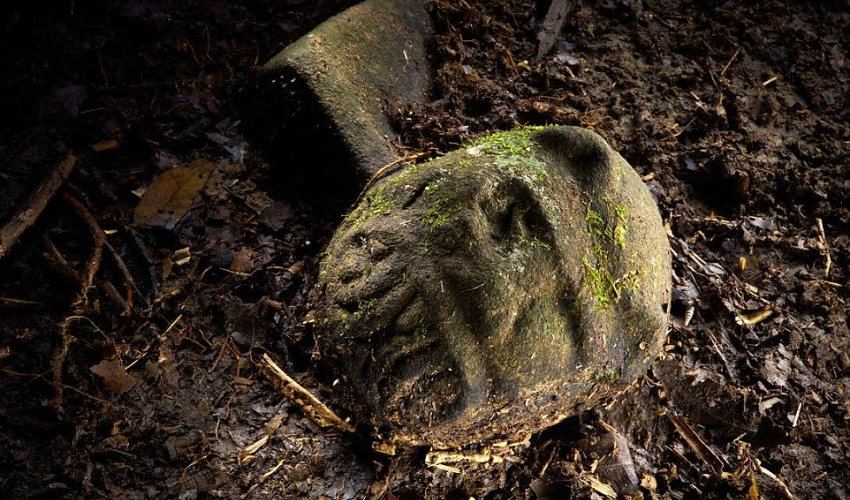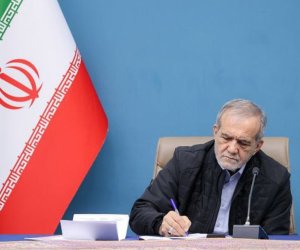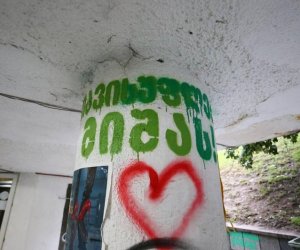Has the White City of the Monkey God been found after 500 years?

A team hunting for the legendary 'lost city' of Ciudad Blanca in Honduras has made a dramatic discovery of untouched ruins deep in the jungle that are thought to be thousands of years old, according to National Geographic.
Researchers believe the complex of plazas, mounds, a pyramid and dozens of artefacts belong to a civilization which was blooming thousands of years ago and then vanished without a trace.
It prompts the tantalizing possibility that they have found the lost civilization known as the White City, which as been the subject of local rumors among tribes people and Spanish explorers around the la Mosquita area of jungle in Honduras for hundreds of years.
Some people call it the White City Of Gold, after ancient texts described ivory temples filled with treasure - and western explorers first made reference to it from conquistador Hernando Cortes to King Charles V of Spain in 1526.
Since then countless adventurers have scoured the jungle for the ancient civilization, rumored to have enjoyed treasures beyond the wildest dreams of many budding Indiana Jones'.
One such adventurer even suggested that the city was in fact known as the White City of the Monkey God, and saw an ancient civilization worship a giant simian deity, symbolized by a large statue.
Theodore Morde, writing of his adventures in US magazine The American Weekly, said that local tribes people told him of the monkey worshiping civilization and went on with even more outlandish suggestions that a monkey from the city. Locals even told him that one 'monkey god' from the city kidnapped a local woman and bred half-human, half-chimp children. The children were then hunted for revenge.
Local tribes people also reportedly related the same story to an anthropologist, according to a Honduran media report.
Morde said that local people told him of a huge monkey temple inhabited by a civilization known as the Chorotegas, and claimed to have fond evidence of such a place on his expedition in 1939-40. But Morde never revealed the location of his alleged find and killed himself in 1954.
However, despite archaeologists' following attempts to detect man-made structures - whether they be from Ciudad Blanca, The White City of the Monkey God or elsewhere - have been unsuccessful. Until now.
Traveling into uncharted territory last month, a National Geographic team found the mounds of white rubble in the shape of a monkey's skull that experts believe to be thousands of years old.
The National Geographic's Douglas Preston wrote: 'The tops of 52 artifacts were peeking from the earth. Many more evidently lie below ground, with possible burials.
'They include stone ceremonial seats (called metates) and finely carved vessels decorated with snakes, zoomorphic figures, and vultures.
'The most striking object emerging from the ground is the head of what Fisher speculated might be 'a were-jaguar,' possibly depicting a shaman in a transformed, spirit state.
'Alternatively, the artifact might be related to ritualized ball games that were a feature of pre-Columbian life in Mesoamerica.'
According to Theodore Morde, stone effigies of monkeys lined the approach to the city's central temple, which was built in the shape of the monkey God.
He described the myth: 'One day three of the hairy men who looked like great apes walked into an Indian village and carried off three of its most beautiful and pleasing maidens.
'They took the girls back into the caves high in the mountains to live with them and bear their children.
'From this union came, however, not human nor partly human children but the small Urus or monkeys.'
It inspired the Dance Of The Dead Monkeys, during which locals roast monkeys over a fire in an apparent act of revenge for stealing their virgins.
The first mention of the city came in Hernando Cortes' fifth letter to King Charles V of Spain in 1926, when he wrote that it will 'exceed Mexico in riches'.
Historians believe, based on his description, that the city was in the region of Mosquitia - which was then, and remains now, impenetrably dangerous.
'…I have trustworthy reports of very extensive and rich provinces,' he wrote, 'and of powerful chiefs ruling over them, and of one in particular, called Hueitapalan, and in another dialect Xucutaco, about which I possessed information six years since, having all this time made inquiries about it, and ascertained that it lies eight or ten days' march from that town of Trujillo, or rather between fifty and sixty leagues.
'So wonderful are the reports about this particular province, that even allowing largely for exaggeration, it will exceed Mexico in riches, and equal it in the largeness of its towns and villages, the density of its population, and the policy of its inhabitants.'
Centuries later, in 1939, Theodore Morde rediscovered the site, and learned from locals that it was home to the myth of the monkey God.
Writing in the Milwaukee Sentinel on September 22, 1940, apologized to his readers that he could not reveal the exact location other than the fact that it was shrouded by towering mountains, a 'rushing cataract, beautiful as a robe of shimmering jewels, cascading into the green valley of the ruins.'
He added: 'More definite location than this I cannot give, because, as I have written, many are they who have sought for the Monkey God's City, attracted by tales of treasure, and we want to find it unmolested on our return journey in January.'
His words have been echoed decades later by the Virgilio Parades, director of the Honduran Institute of Anthropology and History (IHAH), who warned the city and the surrounding rainforest could be obliterated in eight years if the government does not rush to protect it, El Heraldo reported.
The latest discovery comes after researchers from the University of Houston and the National Center for Airborne Laser Mapping (NCALM) flew over the Mosquitia region in a small plane shooting billions of laser pulses at the ground to create a 3D digital map of the topology beneath the jungle canopy.
Compiling their data, the analysts revealed what appears to be man-made elevation changes that are thought to show a forgotten city plaza dotted with pyramids reclaimed by the jungle.
According to legend, Ciudad Blanca or the 'White City' is full of gold and has been sought out by explorers and treasure hunters since conquistador Hernando Cortes first made reference to it in a 1526 letter to King Charles V of Spain.
Inspired by this legend, cinematographer and Ciudad Blanca enthusiast Steven Elkins sought backing from private investors to pay for the team at NCLAM to use their laser mapping technology to chart the forest floor of Mosquitia.
Over the course of a week, the NCALM and University of Houston engineers flew over 60 square miles of forest in their dual-engine Cessna planes.
(dailymail.co.uk)
ANN.Az
Similar news
Similar news




































 Photo
Photo 



 Video
Video 

